By Cristan Williams
Upon completion of this series, this work will be released, in its entirety, as both an audio and ebook.
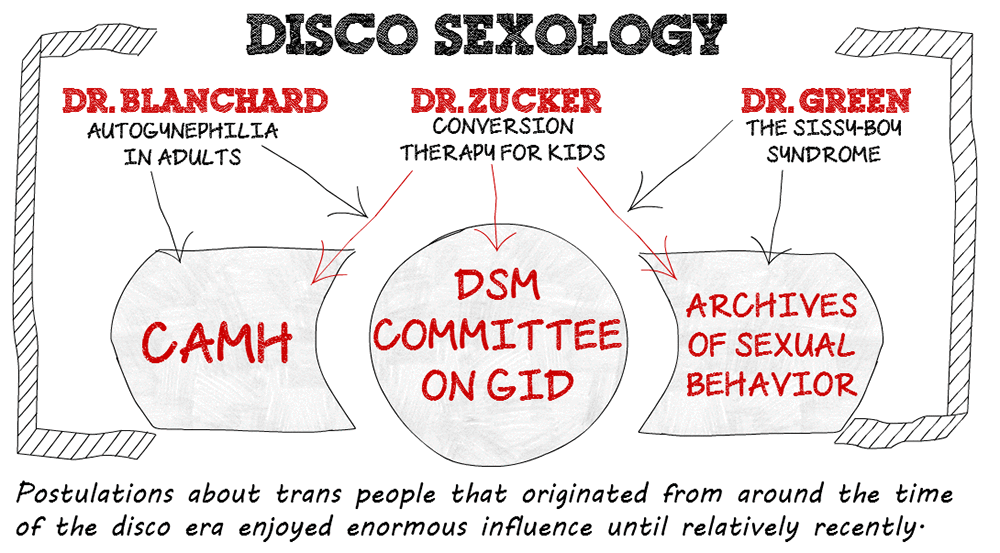

Installment Preface
Welcome to the eighth installment in this series on the rise and fall of Disco Sexology. In the previous installment, I interviewed radical feminist and pioneer in affirmative models of trans care, Arlene Lev. In this installment, I interview the author of the classic, The Last Time I Wore a Dress, Dylan Scholinski. Scholinski was diagnosed with Gender Identity Disorder and confined to a mental institution that sought to convert him into a cisgender girl through makeup lessons and other gender-related “therapies.”
Alternatively, affirming therapeutic models offer a patient-therapist relationship wherein the patient’s gender isn’t problematized. However, this approach was recently criticized in a BBC documentary titled, Transgender Kids: Who Knows Best? wherein a Disco Sexologist named Dr. Zucker compared affirming models of care to buying dog food for kids engaging in anthropomorphic schoolyard play:
“It is possible that kids who have a tendency to get obsessed or fixated on something may latch on to gender. Just because kids are saying something doesn’t necessarily mean you accept it, or that it’s true, or that it could be in the best interests of the child.” He later added: “A four-year-old might say that he’s a dog – do you go out and buy dog food?”
This installment represents the fourth of five interviews I conducted with individuals intimately knowledgeable about the nuanced differences between Disco Sexology and affirmative care.

A Conversation with the author of The Last Time I Wore A Dress, Dylan Scholinski
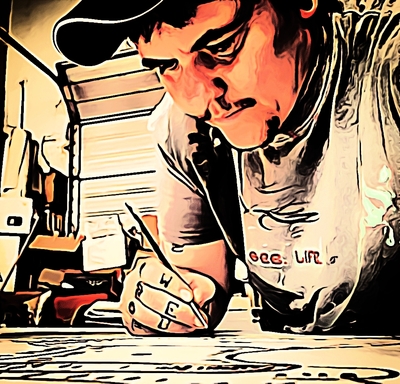 My introduction to the ontology of Disco Sexology came in the 1990s when I read Dylan Scholinski’s critical classic, The Last Time I Wore a Dress. Dylan was given a Gender Identity Disorder diagnosis; which is to say, Dylan’s gender expression wasn’t typical for those assigned a female role at birth and was therefore confined to a psychiatric facility and endured daily “therapy” designed to lower the odds that Dylan would continue to reject the gender role assigned to him at birth.
My introduction to the ontology of Disco Sexology came in the 1990s when I read Dylan Scholinski’s critical classic, The Last Time I Wore a Dress. Dylan was given a Gender Identity Disorder diagnosis; which is to say, Dylan’s gender expression wasn’t typical for those assigned a female role at birth and was therefore confined to a psychiatric facility and endured daily “therapy” designed to lower the odds that Dylan would continue to reject the gender role assigned to him at birth.
Cristan Williams: Would you talk about what led to being placed in a facility where “therapy” was makeup lessons?
Dylan Scholinski: I had been a gender variant person growing up in the world of heteronormative culture. I was constantly pressured to wear dresses and had kids give me a hard time at school where teachers weren’t supportive; in fact, they allowed some of the bullying that was happening. I think that I had given into that depression that’s caused by being ostracised and mistreated in the world. It’s not an easy thing to grow up in and so I started acting out in school, became depressed, and stopped going to school altogether.
There were many causes for alarm and so when I was seeing a family therapist they recommended to my family when, at around the age of 12 that I tried to commit suicide, one choice: lock her up. Not really understanding what that meant and being sort of middle class, I think that my parents trusted the system to give them good advice, and so they followed the recommendation and pursued institutionalization.
So, when I was in my first facility, when I was being admitted, primarily for what my parents understood to be depression, my first doctor, after a 15-minute meeting, had diagnosed me with Gender Identity Disorder present since grade three. My treatment was designed around the idea that if I would be more appropriately feminine, then the world would treat me better, and then I could go on and be happy.
That was the focus of their therapy. It had everything to do with the fact that I looked androgynous. They would say even in my records that I wore shapeless clothes, and that while I look gender ambiguous, they still found me attractive. It was incredibly inappropriate; I mean, who cares if they found me attractive? What does that have to do with anything?
My treatment centered around learning about makeup and curling and styling my hair while saying something nice to myself while I looked in the mirror. The affirmations couldn’t be something like, “You’re a good baseball player!” It was stuff like, “You look pretty today!” or, “I really like wearing makeup!”
The message was very clear and very strong: if I were to just become somebody else, then the world would be okay. It wasn’t that I would be okay, it was that I was so detrimental to the world, that I needed to be removed from it. I was being told that I was wrong and that I was sick and if I didn’t want to comply, I would be seen as being difficult, disrespectful, and lazy.
Now, I don’t think that the people who were treating me were monsters or that they were going out of their way to do anything other than what they were taught. I think they truly believed that they were doing what was best for me, but in reality, they were doing what was the absolute worst.
I was discharged five days from when I turned 18, so this represented my entire high school experience. I think I would have rather been bullied at just a regular school.
Williams: Would you please talk about what facilities and in what states you were located?
Scholinski: My first assignment was Michael Reese Hospital on the south side of Chicago. It had the reputation for being the best adolescent treatment facility in the area which, I found interesting because, on my unit, there were only 3 or 4 other kids there my age. People ranged from my age to the age of my grandparents. Most of the people I was in the unit with were adults.
I was transferred from there to a place called Forest Hospital in Des Plaines that was sort of like a short-term holding because they were trying to get me into this long-term facility in Minnesota called the Wilson Center that is now closed.
Williams: Would you please talk about your experience exiting institutionalized life and working with gender after that experience?
Scholinski: My book came out in 1997 and in 1995 I spoke about my experience and it was pretty scary but really incredible. I mean, I’d never really been a public speaker; it’s funny how things change and the fears you’re willing to face when you’re in the act of saving your own life.
I didn’t know that I was trans back then; I didn’t understand and I wasn’t in a space where I could explore that safely… not just my transness, but first coming out as a lesbian because all I understood was that the world was telling me that I was female-bodied and that I liked women which meant that I was lesbian.
When I acknowledged my attraction to women in my journal, it was –in that institutionalized space– like an acknowledgment of being crazy; I’d managed to keep that identity at bay, so it took me a while. Also, there was the process of coming out as an ex-mental patient because at times, that was even harder; there’s a way that people perceive mental health and treatment, but that’s my background.
So, I went through these various stages of identifying and then opening up to a new level of truth about myself. I mean, here I am; I’m 50 years old now and I was discharged when I was 18 and still, stigma will creep its way into the way I position myself in the world. Even though there’s value in my book, there’s still this child part of me that can struggle with stigma, not of being trans or being queer, but of being a psychiatric survivor.
So, my identity, as I’ve connected with myself, the best way to describe myself is that I’m just me and that I’ve been in this constant state of becoming, which I’m comfortable with. Most of the time my struggle is helping other people understand, accept, and allow me to be me and question any need I find I may have to seek permission to be myself.
Williams: Here you’ve really touched on the crux of what this entire series is about. I’m looking at the differences between the set of ideas about transness and gender that developed around the time of the disco-era –what I’m calling Disco Sexology– and how that differs from what is called “affirmative therapy” or therapy that doesn’t start off with a predetermined idea of what must be optimal for the patient. In other words, current best practices wouldn’t endorse therapy that began with the concept that the most optimal way for someone to experience their selfhood must be cis, lesbian, heterosexual, trans, etc.; the therapy meets the patient where they’re at and is focused on helping the patient discover what’s true and appropriate for them.
Scholinski: Exactly. That’s how I engage the youth that I work with through my art studio. Frequently people will ask me how many of my students are queer or trans and I can say is that I don’t know. My goal is to help every person I interact with become their most authentic self and that doesn’t happen quickly sometimes.
When we do intros at the beginning of class and we state our pronouns, I let them know that that can change and change back and that at no point does that make you dishonest as we step in and out of identities in a world that’s pulling you in different directions.
Williams: Would you talk about the work that you’re doing?
Scholinski: I work at Jefferson County Open School. It’s an alternative public school in Colorado, which is like a dream come true in terms of where I get to teach; it’s the sort of learning space that I would have excelled in.
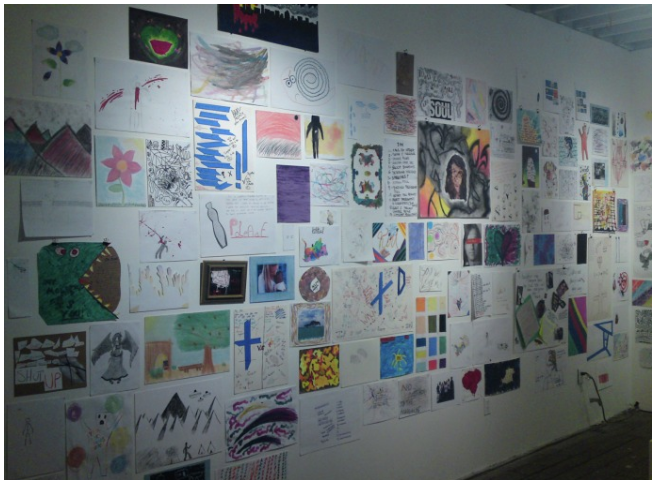
I also run a suicide prevention art program for youth through my art studio. When I moved to Colorado 10 years ago, I made my studio project more formal by naming it the Haven Youth Project with specific hours. Youth are able to express their experience through art –make art, make music, and be creative; hang out, talk, read and to just be themselves– in an affirming space; I interact with several hundred youth each year and it’s really amazing.
Williams: Media seems ready to normalize the idea that it’s important to preserve a therapeutic model that insists that being trans should be avoided and that such avoidance can be achieved with the right religious propitiations or psychological regimentation. Moreover, some are happy to assert that not putting kids through this type of aversive treatment is akin to child abuse in that to do otherwise is to take away the kid’s chance at not being trans.
On one hand, there are those who claim that there could be a kid who, for whatever reason –they watch a movie or cartoon, play a certain video game, see someone online– and decide that being trans is cool and so they transition –have hormones and surgery– as a kid, and then later grow up to regret their transition and wish they’d gone through some type of therapy to keep them from transitioning.
On the other hand there’s another side that asserts that the optimal outcome is that –especially for those who were assigned female at birth– through sharing or so-called “talk-therapy,” community, and Sisterhood, those who would have otherwise identified as transmasculine or as a trans man, would be able to accept that being female is the truth of who they really are and that that’s okay.
These folks wonder, not infrequently in the media: “Why is it’s so unreasonable to keep these ‘options’ open for people –especially kids– who might otherwise be saved from being trans?”
Do you have any thoughts about these perspectives?
Scholinski: I was sitting here listening to you describe where these people are coming from and it’s just sad; I mean, I’ve been through both of those types of being saved. I was raised within Lesbian culture and I’ve unfortunately experienced that anti-trans argument. I’ve had well-meaning people tell me that I was wrong about myself and that I was really just a butch woman, as if being butch is somehow lower; neither one of those outcomes are bad or worse than the other. They’re perfectly okay and there’s no hierarchy to it. When for me, I moved towards having chest surgery, my goal wasn’t to “be a man.” My goal was to simply be myself, knowing how it is to be within my own body and what that experience is like.
I remember back in San Francisco, we would have these big meetings at the library trying to make peace between the anti-trans Lesbian feminists and trans men who were portrayed as traitors, trying to listen to each other’s stories. The reality is that when you own who you are, become who you are, it’s the first time in your life that you’re not being a traitor to anyone; you realize that you’ve been a traitor to yourself. What I’d ask is that for those communities, we accept people for who they are rather than wishing them to be something different.
It’s such a hard thing to get through all the layers of shit –what they say we’re supposed to be– that people put on us so that when we finally get down to some of our own truth, and find yet another person standing there telling us that they just can’t trust you, they can’t believe you, or that you don’t know what you’re talking about when it comes to yourself, it’s a travesty.
I would argue that most of my treatment, whether that was in the Lesbian feminist community or in the hospital, was about making me more comfortable for them, than it was for me. Most of those experiences were about trying to make me more understandable or recognizable to other people, rather than helping me to understand who I was.
This fire keeps coming up between the Lesbian “feminist” community and the trans community and it really does a disservice to both. I also think that some in the trans community can be judgmental also. I’m not interested in whether you’re more trans or not; if we can stop trying to direct people, we can discover that all we really need to do is to be there for each other, to allow ourselves to become who we are, and to celebrate who that is when we get there.
I think it’s okay for an adolescent to explore their identity and maybe try something on and figure out if it fits for them. But, surgeries and things like that aren’t going to happen in the way some people in the media say it does.
Williams: What would you say to parents who hear about someone who went through some curative program that, in fact, produced a person who comes to reject their trans identity in favor of the identity the program or therapist believed to be most optimal for that person? For these parents, they may believe that they’re doing a disservice to their kids if they don’t put their kids through programs designed to encourage kids to not identify as being trans.
Scholinski: [Hmm] As an artist, and as someone who works with at-risk youth, I want to encourage people to embrace their creative self. I think it’s important to realize that at no point is someone a liar if their truth about themselves evolves. The reality is that finding our truth is a process, and so if someone’s identity changes, if that’s their truth, I think that’s okay.
What I’m concerned about is people being persuaded by people who do not have their best interests in mind. So, regardless of circumstance, that would be my central question. Do the people “helping” the person with their identity fear the person having too much freedom to explore themselves? Is freedom viewed as being dangerous? ⬛

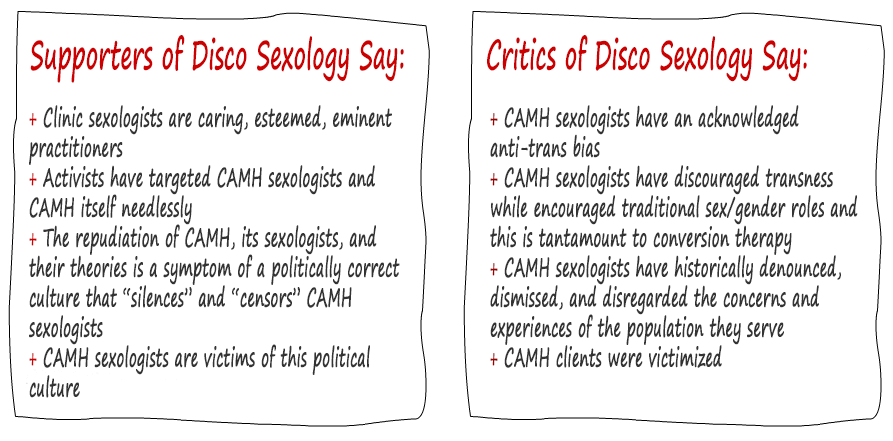
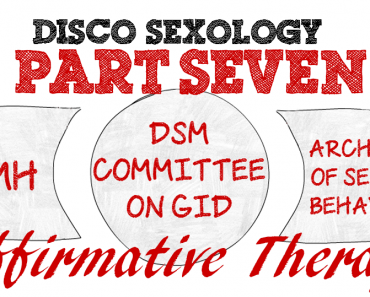
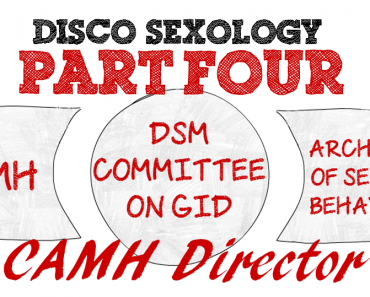
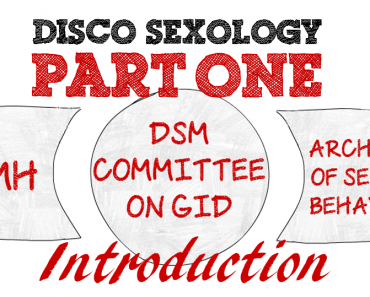
Hi Frankly to me, most of the historical stuff and indeed the kind of wild and crazy debating nowadays are both due to an insistence on proceeding without adequate medical knowledge, and that inadequacy is not always the fault of the screaming and whining speakers, since there has, in fact been no organized effort to actual concentrate on getting down to the underlying neuroscience of the TG issues.
Hopefully you will find this Podcast interesting and relevant. It was a rather novel occurrence in that we had two young guys from the Right wing mainstream interviewing me…from another world…..and only knowing the nonsense that they had been fed by the media…and trying to figure out what to make of the Trans phenomena in society and the Trans controversies…as well as to solve their puzzlement over how a Trans person could find Trump a breath of fresh air…
https://soundcloud.com/rachel-castalia-francon/wrongthink-interview
The “pronoun ” skirmishes and the violent bathroom wars” as well as much else of the turbulence that bubbles up within the Trans Ghetto are not my main interest. That is neuroscience and that is what my upcoming book will focus on. However, because they were interested in the interview for political reasons, we did this…and they likely got more than they expected. But i f you follow the interview you will see how present the outlines of a comprehensive theory of the gender dysphoria situation and also how to base any policy on finally generating some sensible research rather than seeing who can scream the loudest.
I don’t really expect most folks from either outside or inside the Trans community to agree with me at this stage. Bur really that, of course, makes no difference to me. The objective is to get down to researching and understanding the biology…and that is not going to come, it seems from within the Trans community…or the various “deniers” either.
Take a look or ‘listen” . Perhaps it will resonate in some of its aspects.